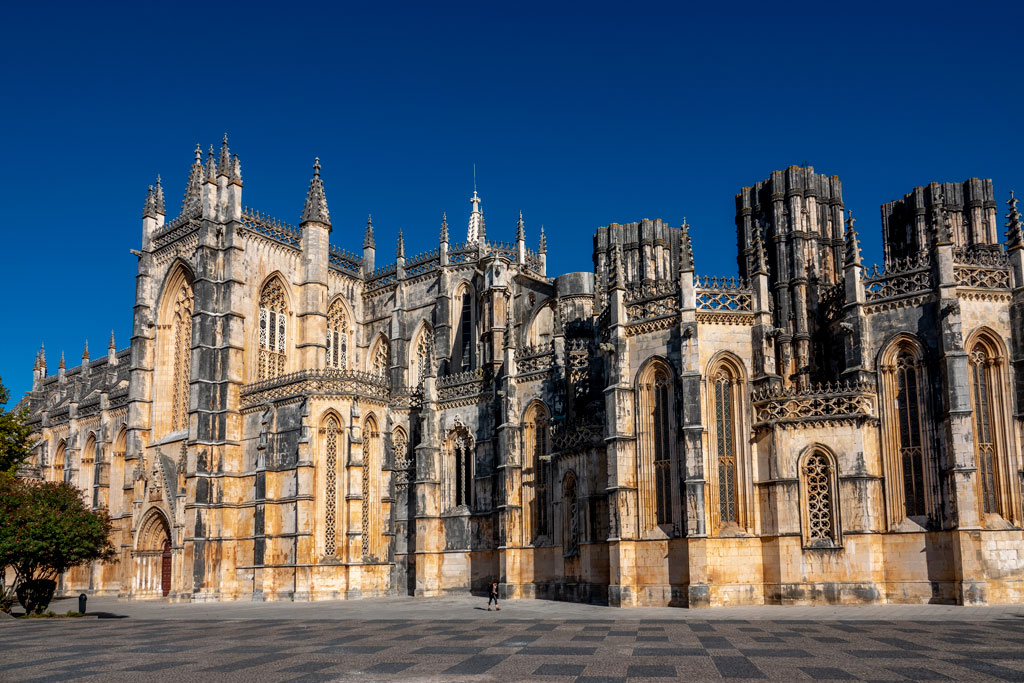TODAY’S TOURING
We had breakfast, pastries & espresso, in the apartment. Today’s goal was the monasteries at Batalha and Alcobaca. Marty bravely drove the car out of the underground garage; not an easy task. We then drove to Batalha to tour the Monastery of Santa Maria (Batalha).
- Found free parking next to the monastery.
- I got the Senior discount ticket (€3 vs. €6).
- Toured The Church of our Lady of Victory.
- Toured the Founders Chapel.
- Toured the Cloisters.
- Toured the Unfinished Chapels.
- Espresso and pastries at cafe with view of the church.
Alcobaca was along the return to Nazare so it was an easy drive to see the Monastery of Santa Maria (Mosteiro de Santa Maria).
- We got free parking a few blocks away from the monastery.
- Again, I got Senior discount ticket (€3 vs. € 6). These two discounts paid for our espressos and pastries.
- Toured the church.
- Toured the Hall of Kings.
- Toured the Cloisters.
- Toured the Kitchen.
- Toured the Dormitory.
- In Alcobaca, we stopped at a small Spar grocery and purchased breakfast items for the next day.
- Marty drove us back to the apartment and we rested.
REFERENCES
▲▲▲ Monastery of Santa Maria (Batalha) (Rick Steves)
This monastery, the symbol of Portugal’s national pride, was built by King João I after winning the Battle of Aljubarrota. Unfortunately, the highway runs directly in front of the monastery, but at least you can’t miss it from the road.
▲▲Monastery of Santa Maria (Mosteiro de Santa) (Alcobaca) (Rick Steves)
This Cistercian abbey church, despite its mainly Baroque facade, represents the best Gothic building in Portugal. It’s also the country’s largest church, and a clean and bright break from the heavier Iberian norm. Afonso Henriques began construction in 1178 after taking the nearby town of Santarém from the Moors.
The first Cistercian monks arrived in 1228 and proceeded to make this one of the most powerful abbeys of the Cistercian Order and a cultural center of 13th-century Portugal. This simple abbey was designed to be filled with hard work, prayer, and total silence. With finely preserved old dormitories and dining halls, it’s the easiest place in Portugal to really envision the life monastic.
While the chapel is an interesting landmark, it is even more so as it tells a common story of the conversion of medieval Portugal, and many similarly converted pagan structures exist across the country. However not all Portuguese have given up the old ways and while praying to Christ, many are known to slip in a prayer to the old gods.
